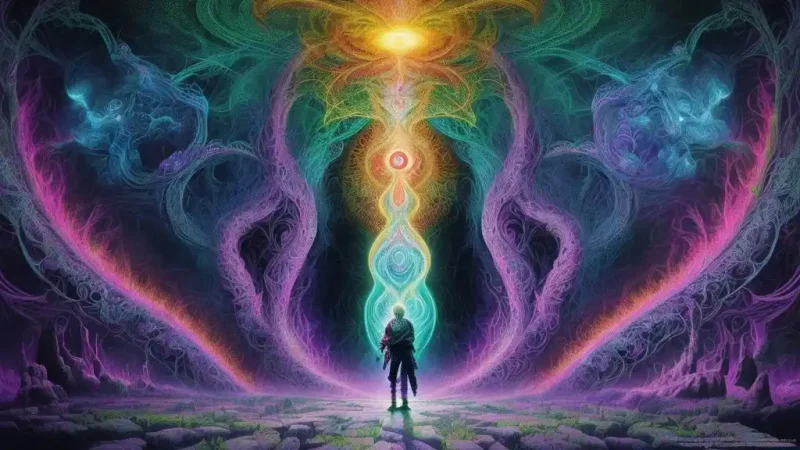Is there such a thing as an ayahuasca “bad trip”?
The concept of a “bad trip” is rooted in psychedelic and LSD culture, where people may experience disturbing or negative psychological effects during their travels, or “trips”. However, applying this terminology to the realm of Ayahuasca requires a more detailed approach. The work done by plants such as Ayahuasca is fundamentally different from what is commonly referred to as a “trip”.
In the traditional cultures of the Amazon, the Teacher Plants are treated with deep respect and sacredness. They are not used lightly or for fun, as they have a deep spiritual meaning.
Ayahuasca is work, not a trip
We prefer to use the term “work” instead of “trip” when discussing the Ayahuasca experience. This emphasizes the intention and effort required throughout the experience. Working with ayahuasca is always aimed at achieving the goals of a person, usually in the field of self-development, self-knowledge, physical and mental well-being.
The term “bad trip” does not capture the depth of meaning and potential for growth in an ayahuasca retreat. Difficult experiences are not inherently negative; instead, it provides people with the opportunity to delve into their psyche and gain valuable information.
Difficult experience when working with ayahuasca:
1. Confronting inner demons
One of the hallmarks of the Ayahuasca experience is its ability to uncover hidden emotions, traumas, and unresolved issues that need attention and resolution.
While this process can be uncomfortable and emotionally taxing, it ultimately paves the way for healing and catharsis. Awareness of one’s inner demons and their “working through” in one form or another (through letting go, fighting, stepping over, etc.) leads to deep emotional release and personal growth.
2. Dissolution
Dissolving one’s ego or sense of self can be a disorienting aspect of the Ayahuasca experience. This sensation can cause a feeling of loss of control or merging with the greater cosmic reality. This dissolution is unsettling at first, but can provide a wonderful insight into the nature of existence, expanding one’s horizons beyond the individual self.
3. Symbolic visions
Ayahuasca work is often accompanied by vivid and symbolic visions, sometimes containing complex or frightening images. While these visions can be intense, experienced Ayahuasca users interpret them as opportunities for transformation and growth. These symbols can represent aspects of the subconscious that can be accessed and provide opportunities for self-exploration.
4. Physical discomfort
Physical sensations such as nausea, vomiting, and diarrhea are common during an Ayahuasca experience. While these experiences may be unpleasant, they are an essential part of the cleansing process and are not inherently harmful. Physical discomfort is a form of cleaning, allowing people to get rid of emotional and psychological burdens.
Read more in the article: Ayahuasca – effects on the body. What is a cleaning?
Integration and personal growth
Rather than calling difficult experiences a “bad trip,” a more constructive approach is to take them as an invitation to self-exploration and personal development. In this context, the concept of integration becomes paramount. Integration involves becoming aware of and incorporating the insights gained during the Ayahuasca retreat into daily life. This process turns difficult moments into catalysts for positive change and growth.
Shift in perspective





